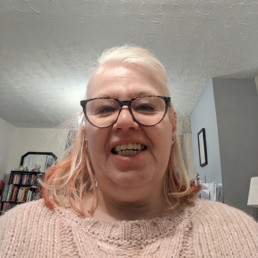
Written by Dr Christine Challen
23 years research experience in the field of cancer research. She has taught at Higher Education, Further Education and more recently as a Supply Teacher in Secondary Schools.
“Imagination is more important than knowledge”
“Education is not the learning of facts but the training of the mind to think” Albert Einstein
One of the many challenges schools face is to explore ways in which to enhance diversity and inclusion in the curriculum. The Chambers Dictionary defines diversity “as the state of being diverse/different.” In order to be able to respectfully acknowledge different cultures, opinions and learning/social barriers through either mental health or special needs you need to know you! Importantly you need to have self belonging and esteem to be proactive towards diversity and inclusion. While the cruel arrival of covid 19 has increased the inequality gaps it has provided a
catalytic incentive for rethinking education and curriculum. In particular,ensuring that it strives to support diversity and inclusion through strategies that consistently and continually enhance “passionate self-reflection” and consistent metamorphosis through “first hand experience and immersion in the living.” If we want to achieve this we cannot do it solely by a subject based education but additionally require a holistic journey embedded within the curriculum to support self-actualisation through a transient passage of being becoming and thriving.
During lockdown I have been somewhat surprised at the amount of non-pedagogy literature which links the use of art, philosophy literature and nature to a sense of becoming independent, resilient innovative spirits. This made me reflect and question; how we could implement such strategies and techniques to improve diversity in education. This approach could not only improve positive and effective emotional responses but also embed much needed tolerance towards enhancing awareness of diversity and inclusion. These attributes are essential for our children to be successful in society and develop diverse global and cultural communication skills enabling resilience and emotional regulation towards education for diverse social justice. As Amber Makaiau states “It’s important that we make room for this learning how to get along with one another…. People skills being conscious of our cultural differences what makes businesses succeed and economies run.”
Harari (2011) describes the importance of the cognitive revolution; new ways of thinking and communication as being responsible for Homo sapiens thriving by adapting to social changes and behaviour. The recent successful adaptation of Phillip Pullmans’ Dark Materials highlights the importance of exposing children to a wide range of literature philosophers and religious voices to enhance rich experiences and imaginative questioning. This supports the view and statement from Robert McKee that “Storytelling is the most powerful way of putting ideas into the world today” and exploring various literatures from different cultures and social backgrounds is still the key technique for enhancing diversity, inclusion resilience and emotional self reflection. Unfortunately while this is a frequent activity in primary schools, it does not continue in secondary. Such would be impactual in building respectful diverse cultural discussions and enhance emotional regulation which during the “difficult” teenage years could act towards a restorative means for challenging behaviour by providing a safe “pupil voice” environment. The introduction of individual subjects is a necessary transition to secondary school nevertheless it is essential to maintain curiosity and questioning and ensure diverse interdisciplinary subject connection here and beyond. Some of the greatest creative minds including Davinci and Einstein had no formal education. Their ability to think innovatively
and communicate diversely was through art and building.
Davinci’s detailed anatomical sketches are widely used today to enhance the teaching of an otherwise “dull” topic anatomy in medical schools. Such techniques have changed the view of anatomy and allowed an overall different outlook and greater accessibility to the detail ,beauty
and diversity of the human body. I have extended this idea to enhance the teaching of organ systems in biology and cells by getting the pupils to build organs/cells out of sweets otherwise known as “Candy Anatomy.” This extends cognitive skills through “modelling” and supports students’ understanding the different structures and how these relate to function. It encourages and builds team working and social skills as well as creating space for student voice.
Another useful way is to allow students to design their own you tubes while building a three dimensional biological process e.g. DNA translation/transcription. This deepens visual and visceral conceptualisation and broadens deep understanding. These can then be posted on remote learning platforms and used as a means of diverse peer support and discussion.
The use of questioning techniques can be built in simple concepts such as what is a rainbow this can be further developed building in diverse ideas as to how the colours link to physics, maths history, music and literature. Similarly The Beat of Life where pupils build a heart from clay and create story boards as to how it connects with literature music and poetry. Such activities encourage diverse connections between, the sciences, arts, spiritual and musical humanities enabling critical thought analysis necessary for self-development.
Experience and conceptualisation are key to self reflection and belonging towards diversity and inclusion. The relationships/connections between the arts sciences and humanities enable this process and provide an excellent strategy and approach to reenergise self and human stable creative and innovative diverse social and cultural tapestries (Challen 2020)
References
The Chambers Dictionary Thirteenth Edition (published by Chambers Harap Publishers 2014)
Human Values Foundation {accessed 5/11/19}
https://www.valuesbasededucation.com/vbe-guide/vbe-material/articles?layout=edit&id=196
https://twitter.com/HVF_Values
Challen, C. (2020). Rethinking higher education policy and leadership for the 21stcentury: Enhancing strategies for global citizenship and justice. Journal of Higher Education Policy And Leadership Studies, 1(1), 77-81. http://dx.doi.org/10.29252/johepal.1.1.77
Challen, C.(2020). The importance of art/poetry and philosophy in educational leadership, well-being and engagement of STEM subjects.Journal of Higher Education Policy and Leadership Studies, 1(3), 41-54. DOI: https://dx.doi.org/10.29252/johepal.1.3.41

